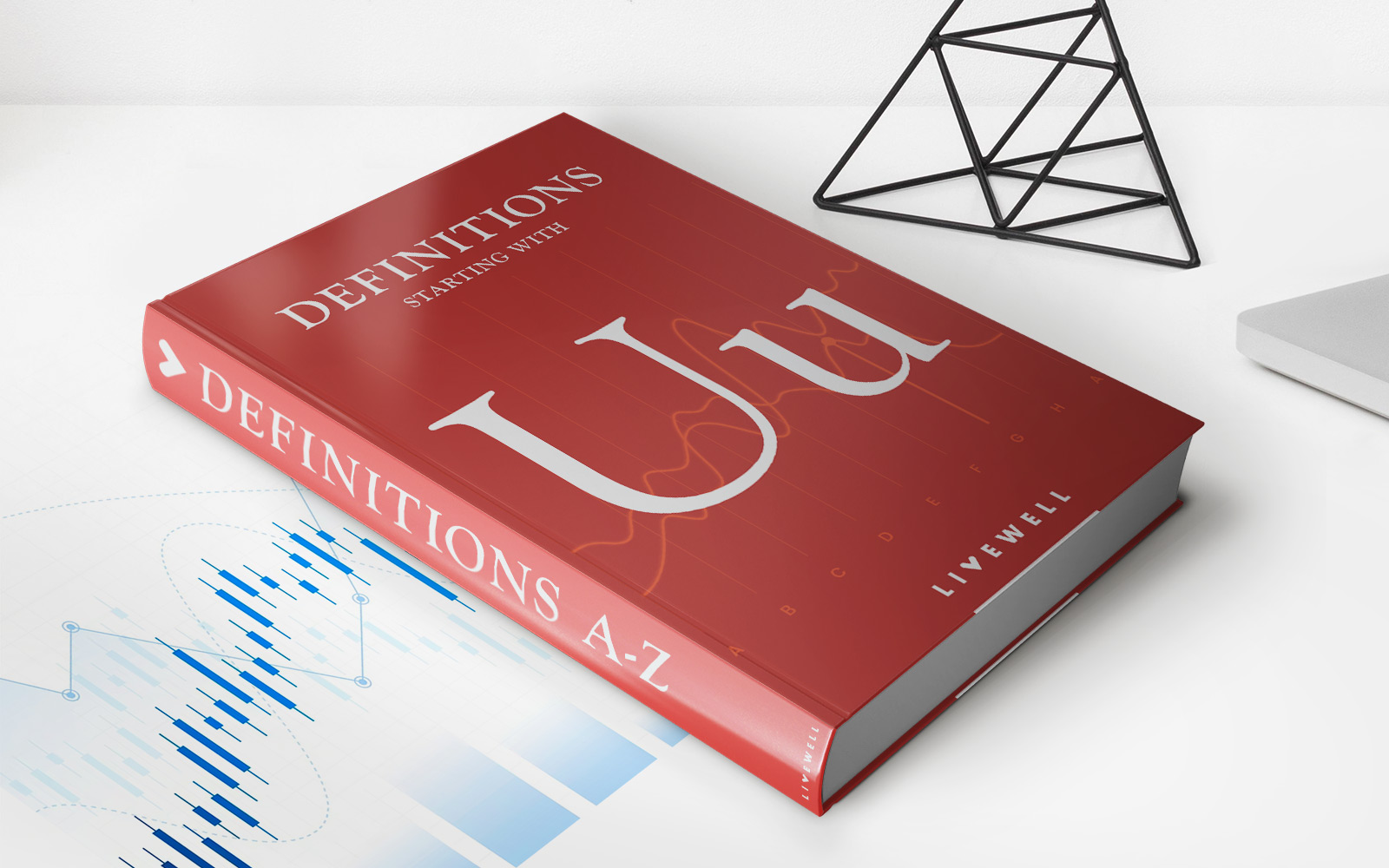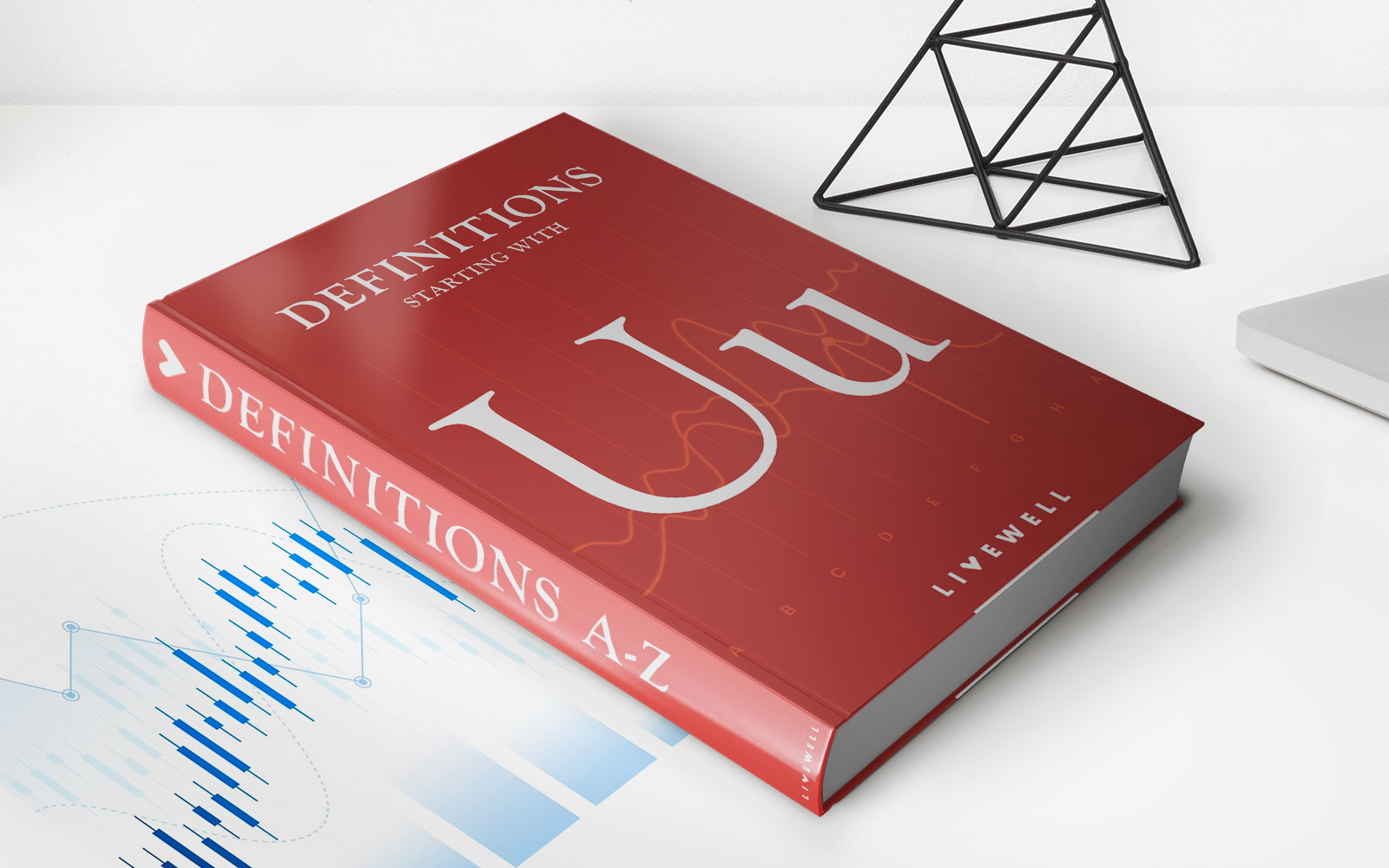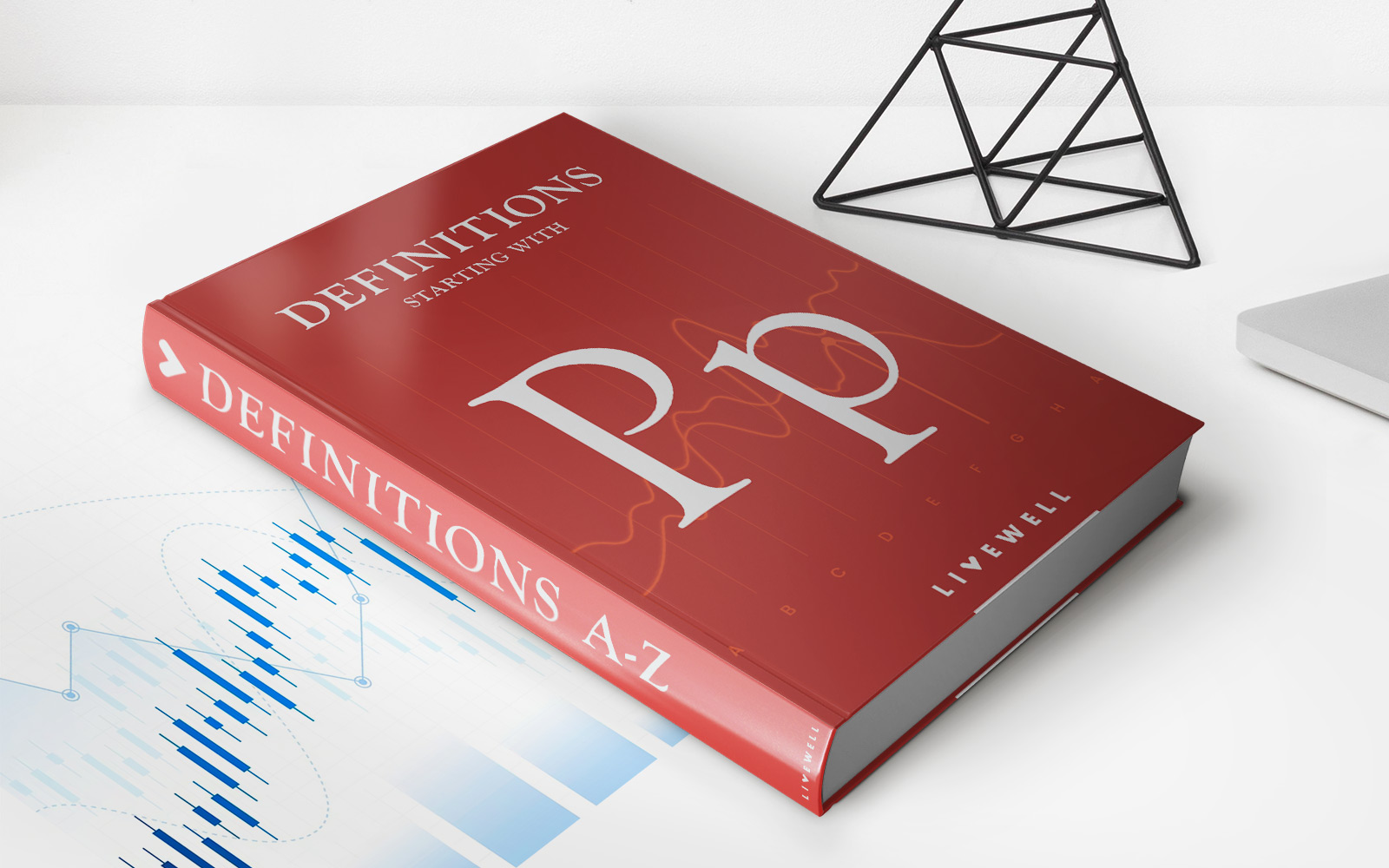

Finance
What Is Unified Credit
Modified: February 21, 2024
Discover the concept of unified credit in finance and how it impacts your financial planning. Learn how to maximize this tax-saving opportunity.
(Many of the links in this article redirect to a specific reviewed product. Your purchase of these products through affiliate links helps to generate commission for LiveWell, at no extra cost. Learn more)
Table of Contents
Introduction
In the world of finance, there is a vast array of complex terms and concepts that can be difficult to navigate for the average individual. One such concept is the Unified Credit. For those seeking a comprehensive understanding of estate planning and estate taxes, it is crucial to grasp the concept of Unified Credit and how it can impact one’s financial future.
The Unified Credit is a provision in the United States tax laws that allows individuals to pass a certain amount of assets to their heirs tax-free. It serves as a valuable tool in estate planning, reducing the burden of inheritance taxes and preserving wealth for future generations.
Understanding the purpose, history, examples, limitations, and benefits of Unified Credit is essential for anyone involved in estate planning or for those who may receive an inheritance in the future. By delving into these aspects, individuals can make informed decisions to mitigate tax liabilities and ensure the smooth transfer of wealth.
This article aims to provide a comprehensive overview of Unified Credit, shedding light on its significance and implications for individuals and families. Whether you are a determined estate planner, a curious heir, or simply looking to expand your financial knowledge, this article will serve as a valuable resource.
Definition of Unified Credit
Unified Credit, also known as the Estate Tax Credit or the Gift Tax Credit, is a tax provision that allows individuals to transfer a certain amount of assets to their beneficiaries without incurring federal estate or gift taxes. This credit serves as a deductible amount against the total value of the estate, reducing the tax liability.
The Unified Credit is a dollar-for-dollar reduction in the amount of estate or gift tax owed. It functions as a type of tax shelter, shielding a portion of an individual’s estate from hefty taxes and ensuring that a significant portion of their wealth can be transferred to their heirs.
The amount available as a Unified Credit is not a fixed figure and is subject to change based on legislation. The Internal Revenue Service (IRS) sets the value of the Unified Credit each year. For example, as of 2021, the Unified Credit is set at $11.7 million per individual or $23.4 million for a married couple filing jointly. Any estate or gift transfers below this value are exempt from federal estate or gift taxes.
It is important to note that the Unified Credit applies to the total estate or gift transfers made during an individual’s lifetime and upon their death. This means that an individual can utilize the Unified Credit to reduce their tax liability both while alive and in their estate planning.
The concept of Unified Credit is closely tied to the concept of the lifetime exemption. The lifetime exemption represents the total value of assets that an individual can transfer tax-free during their lifetime or upon their death. The Unified Credit is used to offset the estate tax liability against this lifetime exemption amount.
The Unified Credit can be a powerful tool in estate planning, allowing individuals to maximize the transfer of wealth and minimize the impact of estate and gift taxes. By taking advantage of this credit, individuals can ensure that a significant portion of their hard-earned assets passes to their loved ones without being diminished by tax obligations.
Purpose of Unified Credit
The purpose of the Unified Credit is twofold: to protect assets from excessive taxation and to facilitate the smooth transfer of wealth from one generation to the next. By providing a credit against estate and gift taxes, the Unified Credit aims to preserve family wealth and ensure that it can be passed on to heirs without being heavily diminished by taxes.
One of the primary purposes of the Unified Credit is to minimize the financial burden of estate taxes on individuals and their families. Without this credit, the total value of an individual’s estate could be subject to significant tax liabilities, potentially depleting a substantial portion of the estate. By allowing a certain amount of assets to be transferred tax-free, the Unified Credit helps to safeguard family wealth and protect it from excessive taxation.
Another purpose of the Unified Credit is to promote intergenerational wealth transfer and estate planning. This credit encourages individuals to engage in thoughtful estate planning to maximize the amount of assets they can pass on to their loved ones. By utilizing the Unified Credit effectively, individuals can ensure that their heirs receive a substantial inheritance while minimizing the tax consequences.
Additionally, the Unified Credit serves to address the issue of double taxation. Without this credit, individuals could be taxed on their assets both during their lifetime and upon their death, resulting in a significant reduction in the wealth that can be transferred to their heirs. The Unified Credit provides a mechanism to offset the impact of estate and gift taxes, preventing unnecessary double taxation and preserving family wealth.
Furthermore, the Unified Credit promotes economic stability and encourages investment by enabling individuals to plan their estates with confidence. By knowing that a certain portion of their assets will be protected from taxation, individuals can make strategic decisions regarding wealth management and investment, with the assurance that their financial legacy will be preserved for future generations.
In summary, the purpose of the Unified Credit is threefold: to protect assets from excessive taxation, to facilitate the smooth transfer of family wealth, and to provide a framework for efficient estate planning. By mitigating the impact of estate and gift taxes, the Unified Credit ensures that individuals can pass on a significant portion of their assets to their heirs, preserving family wealth and promoting financial stability across generations.
History of Unified Credit
The concept of the Unified Credit has evolved over time to address changing estate tax laws and economic conditions in the United States. Understanding the history of the Unified Credit provides valuable insights into the development of estate tax provisions and the intent behind their implementation.
The roots of the Unified Credit can be traced back to the Revenue Act of 1916, which introduced the concept of the federal estate tax. However, the original estate tax did not include any exemptions or credits, resulting in a significant tax burden on estates of all sizes.
It was not until the passage of the Internal Revenue Code of 1954 that the concept of a unified estate and gift tax credit was introduced. The intent behind this provision was to unify the estate and gift taxes and provide a credit against both to prevent the double taxation of assets.
Over the years, the Unified Credit has undergone numerous changes to reflect shifting economic and political landscapes. In 1976, the Tax Reform Act increased the Unified Credit to $60,000, providing a significant tax relief to estates. Subsequent legislative changes have further increased the Unified Credit to its current value of $11.7 million per individual or $23.4 million for a married couple filing jointly in 2021.
In addition to the adjustments in the dollar amount of the Unified Credit, changes have also been made to other aspects of the provision, such as the portability of the credit between spouses. The Economic Growth and Tax Relief Reconciliation Act of 2001 introduced the concept of portability, allowing the unused portion of a deceased spouse’s Unified Credit to be transferred to the surviving spouse, effectively doubling the available exemption for the couple.
The Tax Cuts and Jobs Act of 2017 made significant changes to the Unified Credit, doubling the credit from its previous value and adjusting it for inflation. This legislative change provided even greater tax relief and estate planning opportunities for individuals and families.
It is important to stay abreast of the evolving history of the Unified Credit, as legislative changes can significantly impact estate planning strategies and tax liability. Working with financial advisors and estate planning professionals can help individuals make informed decisions and utilize the Unified Credit to its full potential based on current laws and regulations.
In summary, the history of the Unified Credit demonstrates the continuous refinement of estate tax laws and the recognition of the need for tax relief and efficient wealth transfer. By understanding the historical context, individuals can better navigate the complexities of the Unified Credit and leverage its benefits in their estate planning endeavors.
Examples of Unified Credit
Understanding how the Unified Credit works in practice can provide clarity on its application and potential impact. Here are a few examples to illustrate how the Unified Credit can be utilized:
-
Example 1: Individual Estate
John, a single individual, has an estate valued at $9 million. As of 2021, the Unified Credit is $11.7 million. In this scenario, John’s estate falls below the Unified Credit threshold, which means that his estate would not owe any federal estate taxes. The entire value of John’s estate can be passed on to his beneficiaries without being subject to federal estate taxes.
-
Example 2: Married Couple
Emily and David are a married couple who have a combined estate valued at $20 million. Since the Unified Credit is $23.4 million for married couples in 2021, their estate falls below the threshold. With proper estate planning, they can maximize the use of the Unified Credit to avoid federal estate taxes entirely. By structuring their estate plan to utilize both of their Unified Credits, they can pass on the entirety of their estate to their heirs free of federal estate taxes.
-
Example 3: Gifting Strategy
Sarah wants to gift a portion of her estate to her children during her lifetime. She can utilize the Unified Credit to reduce the gift tax liability. Let’s say Sarah wants to gift $6 million to her children. As of 2021, the Unified Credit is $11.7 million. By applying the Unified Credit, Sarah will only owe gift taxes on the remaining $4.7 million, resulting in significant tax savings. This strategy allows Sarah to pass on a substantial amount of her wealth to her children while minimizing the tax consequences.
These examples demonstrate the potential benefits of the Unified Credit in various scenarios. It is important to note that the specific circumstances of each individual or family will vary, and proper estate planning and consultation with professionals are crucial to utilize the Unified Credit effectively.
Understanding these examples can serve as a starting point for individuals and families to explore their own estate planning options. By structuring their estates strategically and leveraging the Unified Credit, they can minimize estate and gift tax liabilities and maximize the transfer of wealth to their loved ones.
Limitations and Restrictions of Unified Credit
While the Unified Credit provides valuable tax relief and estate planning opportunities, it is important to be aware of its limitations and restrictions. Understanding these factors can help individuals and families make informed decisions and develop effective estate planning strategies. Here are some key limitations and restrictions of the Unified Credit:
-
Graduated Tax Rates:
While the Unified Credit reduces or eliminates the federal estate or gift tax liability up to a certain threshold, any assets exceeding that threshold will be subject to estate or gift taxes at graduated tax rates. It is important to account for these rates and understand how they may impact the overall tax liability.
-
Annual Exclusion:
Although the Unified Credit provides a significant exemption amount, there is an annual gift tax exclusion that allows individuals to gift a certain amount to another person tax-free. As of 2021, the annual gift tax exclusion is $15,000 per recipient. Any gifts exceeding this threshold may reduce the available Unified Credit and may trigger gift tax implications.
-
Portability Limitations:
While portability allows a surviving spouse to utilize any unused portion of a deceased spouse’s Unified Credit, it is important to note that certain requirements must be met. To take advantage of portability, the surviving spouse must file an estate tax return for the deceased spouse’s estate, even if no estate tax is owed. Failure to meet the filing deadline can result in the loss of this valuable opportunity.
-
State Estate Taxes:
While the Unified Credit primarily addresses federal estate and gift taxes, it is essential to consider state estate tax laws as well. Some states impose separate estate taxes with their own exemptions and rates, which may differ from the federal level. Proper analysis and planning are necessary to account for potential state estate tax liabilities.
-
Changing Legislative Landscape:
The Unified Credit is subject to change based on legislative decisions. The exemption amount and other provisions can be modified over time, potentially altering the available tax relief. It is important to stay informed about any changes to estate tax laws and regularly review estate plans to ensure they align with current regulations.
These limitations and restrictions emphasize the importance of working with experienced estate planning professionals who can navigate the complexities of the Unified Credit and develop strategies to maximize its benefits while mitigating potential liabilities.
Understanding these limitations and restrictions allows individuals and families to assess their estate planning goals more effectively, identify potential challenges, and make informed decisions to minimize tax obligations and protect their wealth for future generations.
Benefits of Unified Credit
The Unified Credit offers several notable benefits for individuals and families involved in estate planning. Understanding these advantages is crucial for maximizing the potential of this tax provision and ensuring the smooth transfer of wealth to future generations. Here are some key benefits of the Unified Credit:
-
Tax Relief:
The primary benefit of the Unified Credit is the significant tax relief it provides. By allowing a certain amount of assets to be transferred tax-free, individuals can minimize or eliminate federal estate and gift tax liabilities. This reduction in tax obligations can preserve a substantial portion of the estate, ensuring that more wealth is transferred to heirs.
-
Estate Preservation:
The Unified Credit helps in preserving family wealth by protecting assets from excessive taxation. By utilizing this credit effectively, individuals can pass on a greater portion of their estates to their heirs, ensuring that their hard-earned assets are not significantly diminished by tax liabilities. This preservation of wealth allows for the continued financial stability and security of future generations.
-
Flexibility in Estate Planning:
The Unified Credit provides flexibility in estate planning strategies. It allows individuals to strategically structure their estates to leverage the credit and minimize tax consequences. By taking advantage of the Unified Credit, individuals can allocate their assets in a way that maximizes tax savings and ensures the efficient transfer of wealth to their beneficiaries.
-
Inter-Generational Wealth Transfer:
The Unified Credit facilitates the smooth transfer of wealth from one generation to the next. By reducing or eliminating tax liabilities, the credit ensures that a larger portion of an individual’s assets can be directly passed on to their heirs. This allows for the preservation of family legacies and provides financial security for future generations.
-
Opportunities for Gifting:
The Unified Credit opens doors for strategic gifting during one’s lifetime. Individuals can leverage the credit to gift a certain amount of assets to their loved ones tax-free, reducing their estate size and potential estate tax liabilities. This gifting strategy can provide financial support to family members and allow individuals to witness the impact of their generosity while they are alive.
By taking advantage of the benefits offered by the Unified Credit, individuals can protect their wealth, minimize tax liabilities, and ensure the smooth transfer of assets to their heirs. Estate planning professionals can play a crucial role in guiding individuals through the utilization of the Unified Credit and developing strategies that align with their goals and aspirations.
It is important for individuals to stay informed about the specifics of the Unified Credit, including any legislative changes, to effectively harness its benefits in their estate planning endeavors. By optimizing the Unified Credit, individuals can leave a lasting financial legacy for their loved ones and contribute to the long-term stability and prosperity of their families.
Conclusion
The Unified Credit is a valuable provision in estate tax laws that offers numerous benefits for individuals and families engaged in estate planning. By allowing a certain amount of assets to be transferred tax-free, the Unified Credit provides tax relief, preserves family wealth, and facilitates the efficient transfer of assets to future generations.
Throughout history, the Unified Credit has undergone changes to adapt to evolving economic and legislative landscapes. Understanding its limitations and restrictions is crucial for effectively leveraging this tax provision and developing comprehensive estate planning strategies.
By utilizing the Unified Credit, individuals can minimize their federal estate and gift tax liabilities, safeguard wealth from excessive taxation, and maintain financial stability across generations. The flexibility it offers allows for strategic estate planning, ensuring that assets are allocated in a way that maximizes tax savings and optimizes wealth transfer.
To fully harness the benefits of the Unified Credit, it is essential to stay informed about any changes to estate tax laws, consult with experienced professionals, and regularly review estate plans. This proactive approach ensures that individuals can make well-informed decisions, protect their assets, and leave a lasting financial legacy for their loved ones.
Estate planning can be a complex and intricate process, but with a thorough understanding of the Unified Credit and its implications, individuals and families can navigate the complexities of estate taxes with confidence. By taking advantage of the available tax relief, individuals can secure their financial future, provide for their heirs, and create a lasting impact for generations to come.














